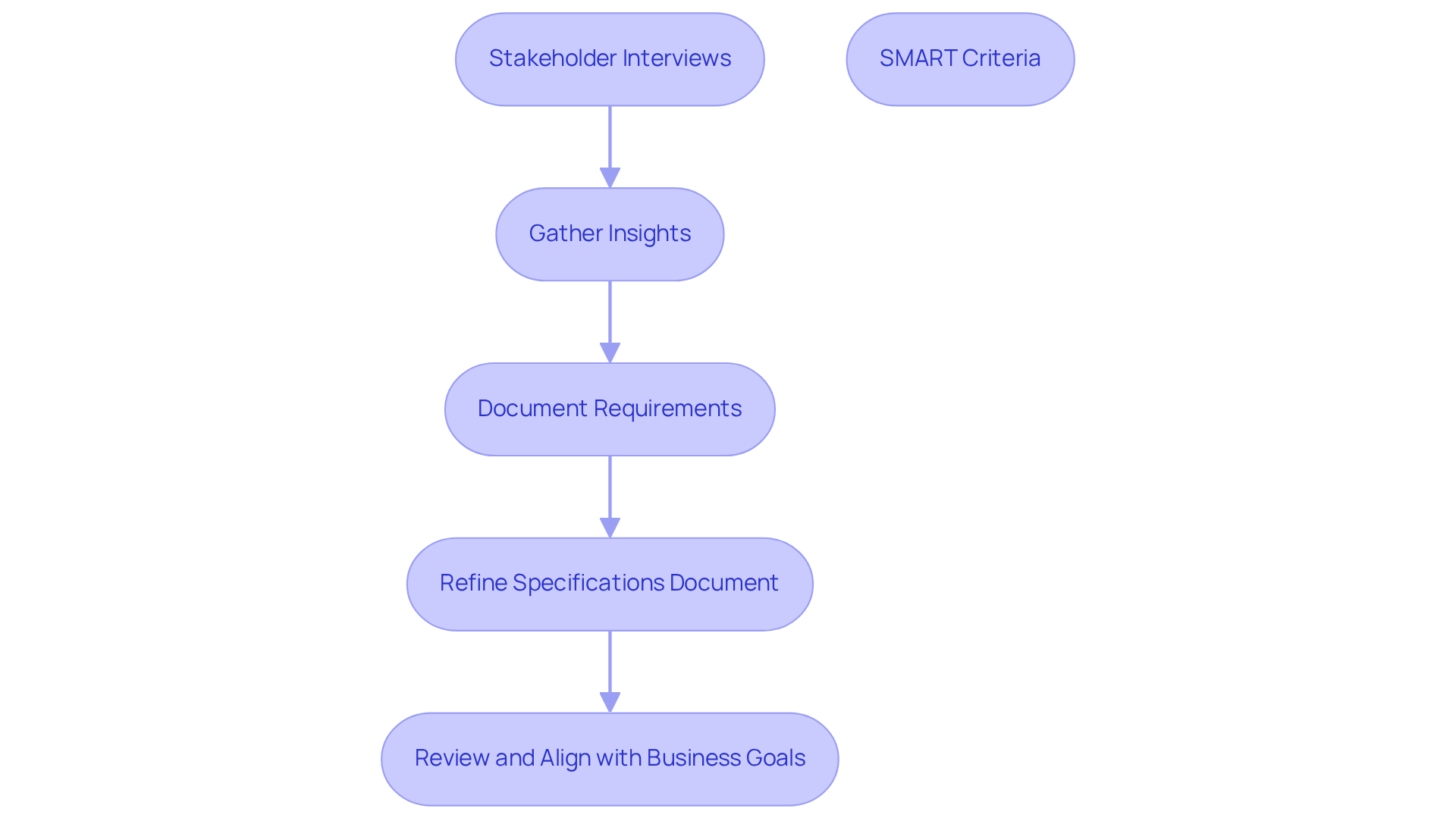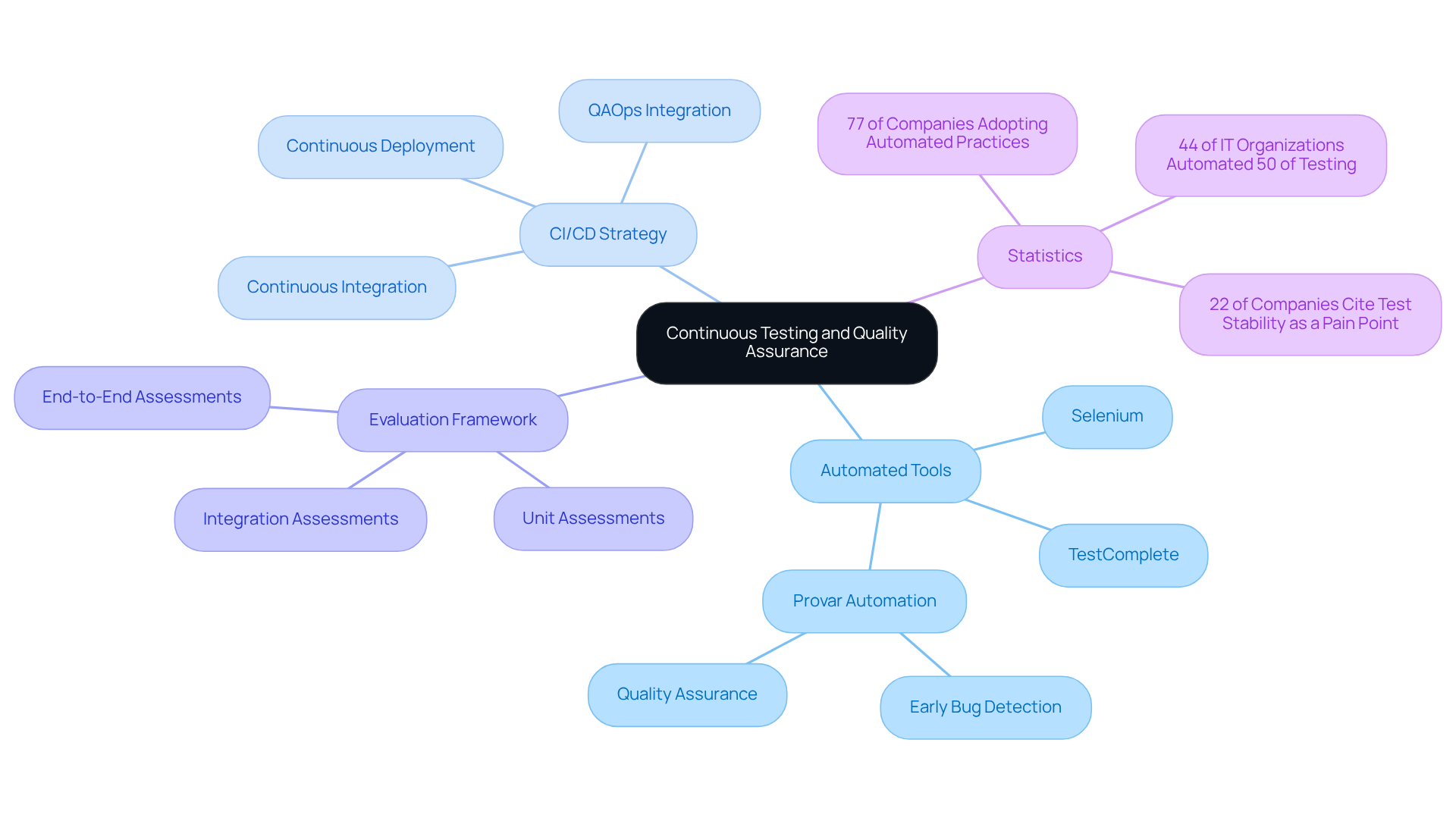AI
our blog
4 Best Practices for Software Development in the UK

Overview
The article delineates four best practices for software development in the UK:
- Establishing clear objectives
- Implementing agile methodologies
- Prioritizing continuous testing
- Leveraging user feedback and data analytics for improvement
These practices are substantiated by compelling evidence that underscores their effectiveness. For instance, agile approaches are linked to notably high project success rates, while stakeholder engagement is crucial in refining software requirements. Ultimately, these strategies lead to enhanced quality and increased user satisfaction, making them indispensable for any development team aiming for excellence.
Introduction
The landscape of software development in the UK is rapidly evolving, propelled by an unwavering pursuit of efficiency and quality. Organizations are increasingly focused on enhancing their processes, making the understanding and implementation of best practices crucial for success. This article explores four essential strategies that not only streamline development but also cultivate a culture of continuous improvement. However, as many companies encounter obstacles in adopting these practices, one must consider: what are the key elements that can transform traditional software development into a dynamic and responsive process?
Establish Clear Objectives and Requirements
To establish clear objectives and criteria, it is essential to begin with stakeholder interviews that gather invaluable insights into their needs and expectations. Techniques such as user stories and use cases effectively articulate these requirements. It is crucial to document all elements in a specifications document that delineates both functional and non-functional criteria. This document should be treated as a living entity, revisited and refined throughout the project to ensure alignment with evolving business goals. Employing frameworks like SMART (Specific, Measurable, Achievable, Relevant, Time-bound) enhances the clarity and actionability of objectives, thereby guiding the development process effectively.
Significantly, 86% of organizations have adopted agile methodologies, underscoring the importance of clear specifications in fostering successful project outcomes. However, 42% of organizations report general resistance to change as a barrier to agile adoption, highlighting the challenges in conducting effective stakeholder interviews and developing specifications. Case studies, such as 'Deliver and Refine SRS Document,' illustrate that teams prioritizing stakeholder involvement and maintaining comprehensive documentation achieve markedly superior quality results and enhanced project alignment.
Furthermore, understanding and documenting non-functional requirements (NFRs) is imperative, as they ensure that the product meets user and stakeholder expectations, further optimizing the overall effectiveness of the requirements specification process.

Implement Agile Methodologies for Flexibility
To effectively implement Agile methodologies, organizations should begin by adopting frameworks such as Scrum or Kanban. It is essential to arrange groups into cross-functional units that collaborate on sprints, focusing on delivering small, incremental enhancements. Regular stand-up meetings play a crucial role in facilitating communication and promptly addressing any roadblocks.
Furthermore, tools like Jira or Trello can be utilized to manage tasks and visually track progress, thereby enhancing transparency and accountability. These tools specifically support Scrum and Kanban practices by enabling teams to visualize their workflow and manage tasks efficiently.
Cultivating a culture of continuous improvement is vital; conducting retrospectives at the end of each sprint allows teams to reflect on successes and identify areas for enhancement. This iterative approach not only improves group dynamics but also ensures that the product evolves based on authentic user feedback.
Statistics indicate that Agile practices can lead to a 75.4% project success rate, underscoring the effectiveness of these methodologies in software development UK. However, organizations often encounter challenges in Agile adoption, such as insufficient leadership participation, which 41% of respondents have identified as a barrier. Agile coaches emphasize that teams utilizing Scrum report enhanced collaboration and alignment with business objectives, making it a preferred choice for many organizations.

Prioritize Continuous Testing and Quality Assurance
To effectively prioritize ongoing evaluations, incorporating automated assessment tools such as Selenium or TestComplete into your development pipeline is essential. Establishing a continuous integration/continuous deployment (CI/CD) strategy facilitates regular code integration and automated evaluation, ensuring that every change is verified against quality standards. A robust evaluation framework must encompass:
- Unit assessments
- Integration assessments
- End-to-end assessments
These assessments cover all aspects of the application lifecycle. Furthermore, regular code reviews and pair programming sessions are crucial for maintaining code quality and adherence to best practices. By cultivating a culture of quality, teams can significantly minimize defects and enhance user satisfaction with the final product. This approach aligns with current trends in automated evaluation, where 77% of companies are adopting automated practices to enhance overall quality and efficiency. As Provar Automation states, 'Continuous evaluation builds confidence in organizational processes,' reinforcing the importance of a quality-centric culture. Moreover, with 44% of IT organizations having automated 50% of their evaluations in 2020, it is evident that the industry is progressing towards more automated solutions. However, challenges remain; 22% of companies have identified test stability as a significant pain point for testing teams.

Utilize User Feedback and Data Analytics for Improvement
To maximize the advantages of participant feedback and data analytics, leveraging tools such as Google Analytics or Mixpanel is essential for effectively monitoring behavior and engagement metrics. In the case of Alchemy Wings, we began by investigating the requirements of various stakeholders, including delivery partners and clients, which informed our customer-focused design strategy. By consistently conducting participant surveys and interviews, we gathered qualitative insights about the product, enabling us to identify trends and areas needing improvement.
For instance, we crafted an intuitive onboarding experience for vendors, integrating Companies House and Brandbank to streamline the process. Furthermore, we implemented a reverse auction feature accessible via an Alchemy Wings API for order fulfillment, allowing delivery companies to connect and bid for jobs seamlessly.
Analyzing this data empowers teams to prioritize findings in their software development UK backlog, ensuring that the software solutions remain relevant and valuable. Establishing a feedback loop where user suggestions are actively integrated into future product iterations fosters a culture of continuous improvement, as demonstrated in our software development UK, ultimately leading to optimized delivery solutions.

Conclusion
Establishing effective practices in software development is not just beneficial; it is crucial for achieving project success and ensuring alignment with evolving business goals. By focusing on clear objectives, adopting agile methodologies, prioritizing continuous testing, and leveraging user feedback, organizations can significantly enhance their development processes and outcomes.
The importance of establishing clear objectives and requirements through stakeholder engagement and documentation cannot be overstated. Implementing agile methodologies fosters flexibility and collaboration, while continuous testing and quality assurance ensure that products consistently meet high standards. Furthermore, utilizing user feedback and data analytics enables teams to remain responsive to user needs and market trends, ultimately driving continuous improvement.
In a rapidly evolving software landscape, it is essential for organizations to embrace these best practices. By doing so, they not only enhance their project success rates but also cultivate a culture of quality and responsiveness that positions them for long-term success in the competitive UK software development market. Embracing these strategies today can lead to more innovative and user-centric solutions tomorrow.









